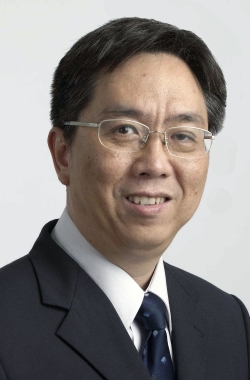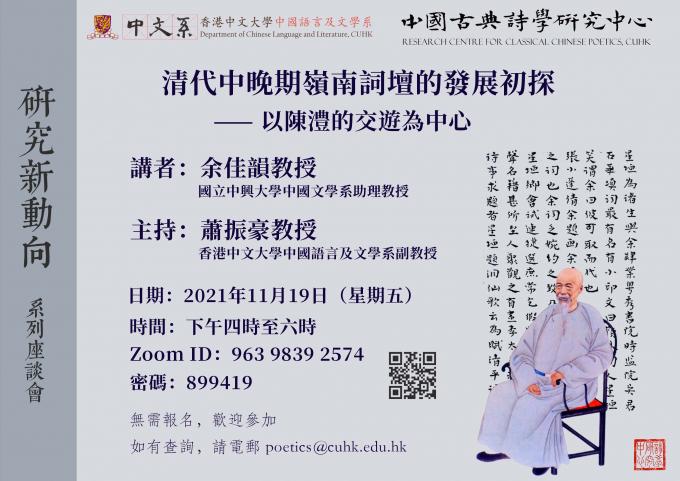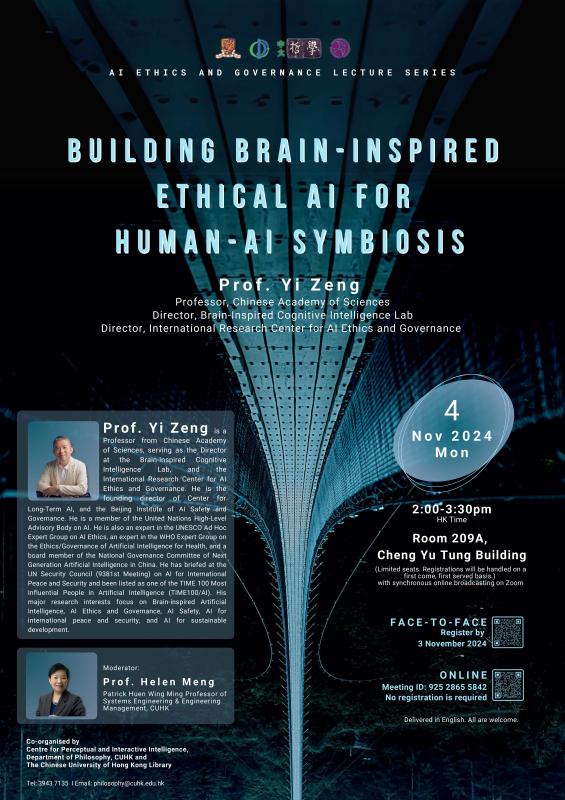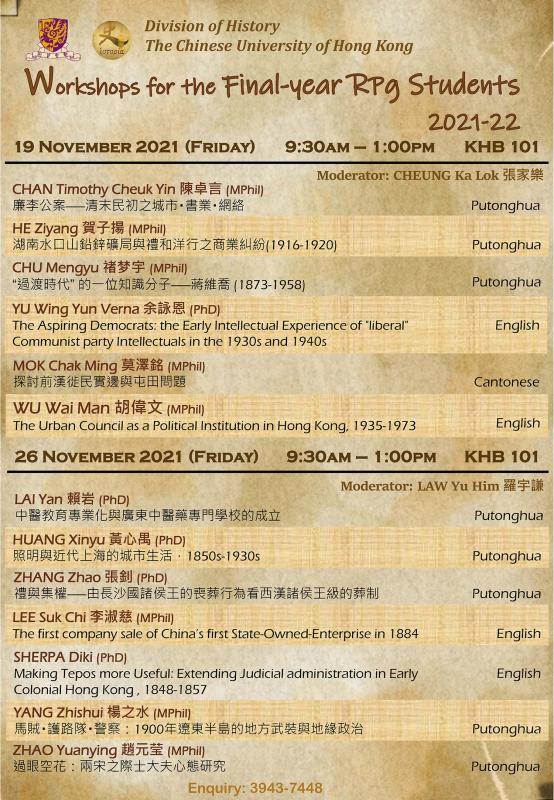中国考古艺术研究计划讲座系列(十)-- 再醒惊天下——三星堆遗址祭祀区的考古新发现
2019年10月,四川省文物考古研究院结合物探、遥感等手段,对三星堆一、二号“祭祀坑”所在区域进行了考古勘探与发掘,新发现“祭祀坑”6座。
2020年10月以来,“新六坑”的考古发掘工作正式展开,四川省文物考古研究院联合国内40馀家科研单位和高校,尽最大努力将科技手段应用于考古发掘和文物保护,多学科、多机构聚力,学科优势成果初显、新的发现不断涌现…

讲者: 雷雨 先生(四川省文物考古研究院三星堆遗址工作站站长,研究员)
雷雨 1984年毕业于北京大学,现任四川省文物考古研究院三星堆遗址工作站站长,研究员。曾主持四川什邡桂圆桥遗址、广汉三星堆遗址、什邡城关墓地和越南义立遗址的考古发掘,目前正主持《三星堆——1980-2005年考古发掘报告》、2012-2018年三星堆遗址年度考古发掘简报的编写以及2021-2025年三星堆遗址的考古发掘工作。
报名连结:https://bit.ly/3m8iAr8
*必须报名参加,成功报名人士将收到电邮确认及网上直播连结。
查询
查询:rpcaa@cuhk.edu.hk / 39430454
主办:香港中文大学文物馆中国考古艺术研究计划
IMARI——外销欧洲的十七至十八世纪伊万里瓷器
伊万里瓷器诞生于1610年代,是日本最早的瓷器。主要窑场位于今佐贺县有田町一带。17世纪中叶至18世纪中叶约一百年间,伊万里瓷器经由荷兰东印度公司(VOC)外销欧洲等地,和漆器并肩成为"MADE IN JAPAN"出口海外的先驱。本讲座介绍伊万里瓷器诞生的背景和外销产品的风格变迁,即从以“芙蓉手”(克拉克瓷器)为代表的仿中国景德镇瓷等瓷器,演变到流行于欧洲、富有日本独特风格的“柿右卫门样式”与“金襕手样式”的过程。

讲者
小林 仁博士(大阪市立东洋陶磁美术馆学芸课长代理)
小林仁,大阪市立东洋陶磁美术馆学芸课长代理,从1997年开始担任该馆学芸员,2018年起担任现职,专长是中国陶瓷史为主的陶瓷史、博物馆学。1994至1996年作为中国政府奖学金高级进修生前往北京大学考古系留学(美术考古)。著有《中国南北朝隋唐陶俑的研究》(京都:思文阁出版,2015年)等。策划的主要展览包括“台北国立故宫博物院——北宋汝窑青瓷水仙盆”(2016年)等。2014年获得“小山冨士夫纪念奖”(第2届奖励奨)。
前来文物馆参与*(必须事先留位,入场时请出示确认电邮)
报名连结:https://bit.ly/3BR3ZVv
参与网上讲座 (ZOOM)
报名连结:https://bit.ly/3qe3DpV
* 讲者将透过网络平台进行演讲。我们非常鼓励观众早上来文物馆看完展览之后,下午与我们在活动室小聚,一起聆听各地专家的分享。(现场参与者可于发问环节优先提问)
翻译研究中心加入文学院
翻译研究中心(Research Centre for Translation)现已加入文学院,成为隶属本学院的研究中心之一。中心成立于1971年,为香港第一所翻译研究学术机构,亦是全球领先的翻译研究机构。中心肩负以优秀翻译作品向世界推广中国文学的使命,积极推动翻译研究的学科发展,培养新一代的优秀学者。为此,中心每年与世界各地高校及研究机构合作举办多种学术活动,包括“宋淇翻译研究论文纪念奖”、各类国际学术研讨会、工作坊、公开讲座等。

中心出版物可分为两大范畴:中国文学英译及翻译研究。中心的旗舰刊物《译丛》(Renditions)创办于1973年,每年出版两期,刊登高水平的中国文学英译作品;另有精装《译丛丛书》(Renditions Books)及平装《译丛文库》(Renditions Paperbacks)两套翻译作品系列,针对不同读者的需要。与此同时,中心致力推动创新及高水平的翻译研究,出版《翻译史研究》年刊、《亚洲翻译传统》丛书、《翻译史研究论丛》丛书及《翻译研究论丛》丛书等学术著作。

翻译研究中心主任王宏志教授说:“本中心与文学院的使命相似,希冀推动中西传统的融合。我们期待今后能和学院紧密合作,与学术界建立更多联系。”
“万国同风”周三午后讲座系列:第四讲
This lecture will give a systematic interpretation of the maritime trade and transportation of Chinese ceramics in a historical perspective. The focus is on which types of porcelain were ordered and what the Dutch East India Company (VOC) transported during the first half of the 17th century.
In this presentation, it will be shown that during the years 1595-1602, individual private companies travelled to Asia from Holland in search of pepper and spices and returned with only minor quantities of porcelain. Chinese porcelain also arrived in the Dutch Republic as booty of captured Portuguese ships, the São Tiago and Santa Catarina.
From 1602 (establishment of the COC Company) until 1622, even though Chinese porcelain was continually in demand, relatively few orders were sent to Asia. The amounts of porcelain items on the return ships were variable, with only a few peaks – in 1614 an amount of 85,540 items and in 1622 several shipping lists show quantities from 36,000 to 90,000 pieces.
Dutch orders for porcelain was decisive in keeping the porcelain production in China active. The VOC was the main company ordering and storing Chinese porcelain and distributed it within Asia and to Europe during the first half of the 17th century. This gave the Company an exceptional place in the history of Chinese export ware.

Speaker:Dr. Christine Ketel (Independent Researcher, Amsterdam)
Christine was coordinator and research assistant in the department of History of the Rijksmuseum in Amsterdam and in 1982 edited the publication of The Ceramic Load of the Witte Leeuw (sank in 1613). From 1985 to the present she has been giving presentations and written articles on the history of the VOC, Kraak-panelled porcelain, Chinese ceramics for the Dutch market, and the Ethical Side of Shipwreck Salvages. Numerous field trips include kiln sites in South China - Dehua, Dongxi and Pinghe and Jingdezhen; archaeological sites at Kharakorum (Mongolia), Tainan (Formosa), the southeast coast of Africa, and Iran. She was invited to numerous international conferences, and has presented papers at Jingdezhen, Nanchang, Shanghai, Dongxi, Beijing, Hong Kong, Singapore, Taipei, Jakarta, Manila, South Africa, London, and in Holland. Christine obtained her Ph.D. Degree in Humanities at Leiden University in September 2021. She is currently updating and digitalizing the publication of The Ceramic Load of the Witte Leeuw, and setting up a database on shipwreck ceramics.
Join at the Art Museum* (Prior registration required. Please present the confirmation email prior to entry)
Registration Link: bit.ly/3GvdlKb
Join Online (Zoom)
Registration Link: https://bit.ly/3nzulX7
危城‧诗书画——晚清广州人文风貌之一瞥
第二次鸦片战争爆发,广州遭英法海军炮轰、攻占。英法联军以“联合委员会”的名义统治广州近四年之久。期间,广州文士仓皇逃离这座危城,至局势稳定后始渐次迁回。战争狰狞野蛮,社会躁动不安,人心惶惶,日子难过。咸丰十年庚申 (1860) 是广州诡异的一年。在“沦陷区”的文士频繁雅集,张扬诗酒文艺,创作了为数众多、意味深长的诗文、书画。本讲尝试通过粤东诗老张维屏、黄培芳之诗文,以及《庚申修禊集》、今传《赏雨楼诗画册》所收录之诗画作品,思考传统诗书画等艺事,对于文士处变、应变时所可能起著的意义,乃至于文艺、雅集、群体等对于重构“地域身份”的微妙作用。

讲者:严志雄教授(香港中文大学中国语言及文学系教授)
严志雄 (Lawrence Yim),美国耶鲁大学博士。现任香港中文大学中国语言及文学系教授、中国古典诗学研究中心主任;曾任台湾中央研究院中国文哲研究所研究员、国立清华大学中国文学系合聘教授。专研明清诗文、文学理论、岭南文学等。著有专书The Poet-historian Qian Qianyi (2009)、《钱谦益〈病榻消寒杂咏〉论释》(2012)、《秋柳的世界——王士禛与清初诗坛侧议》(2013)、《牧斋初论集——诗文、生命、身后名》(2018)、《钱谦益的“诗史”理论与实践》(2019);编著有函可《千山诗集》(2008)、《落木菴诗集辑笺》(2020) 等。曾获台湾中央研究院“人文及社会科学学术性专书奖”(2014)、科技部“杰出研究奖”(2014) 、中文大学“杰出研究学者奖”(2020-21) 等多项殊荣。
*少量现场座位,必须预先于网上报名登记








